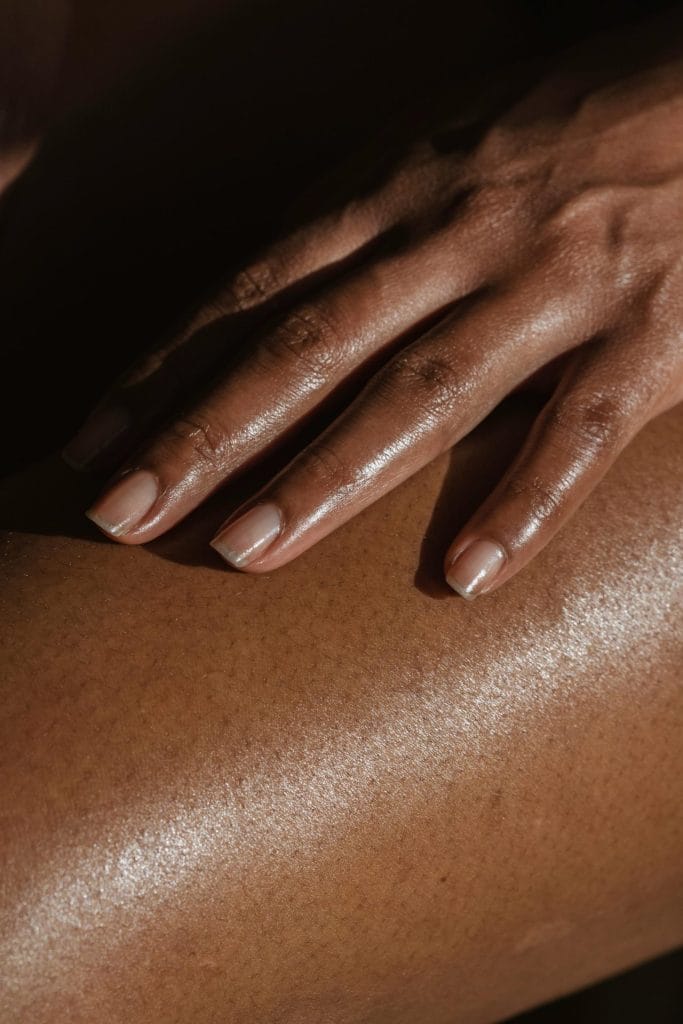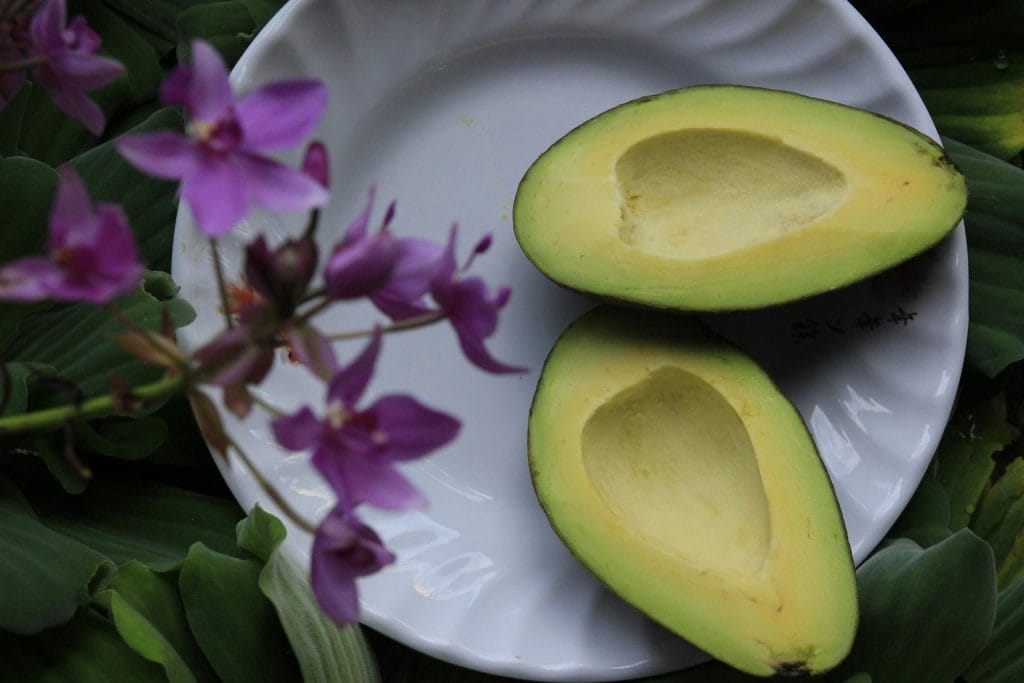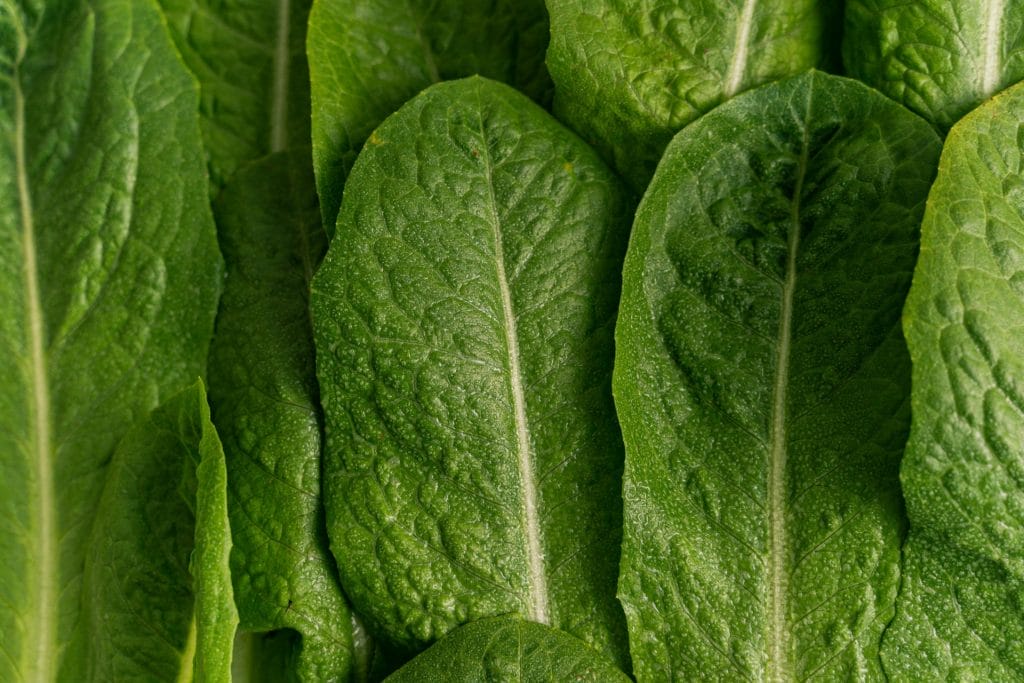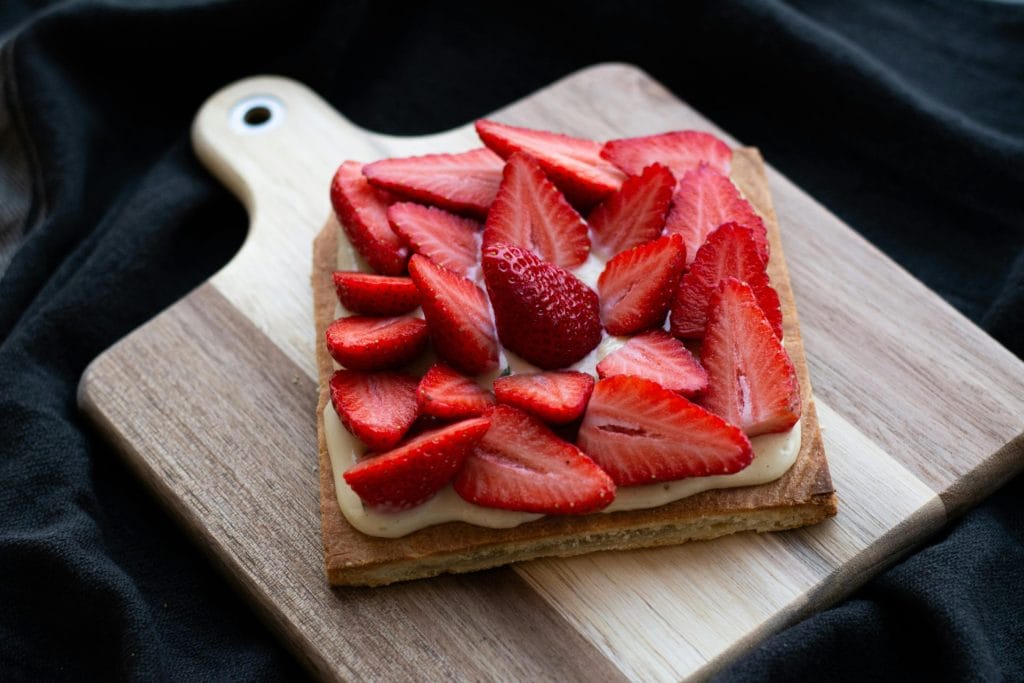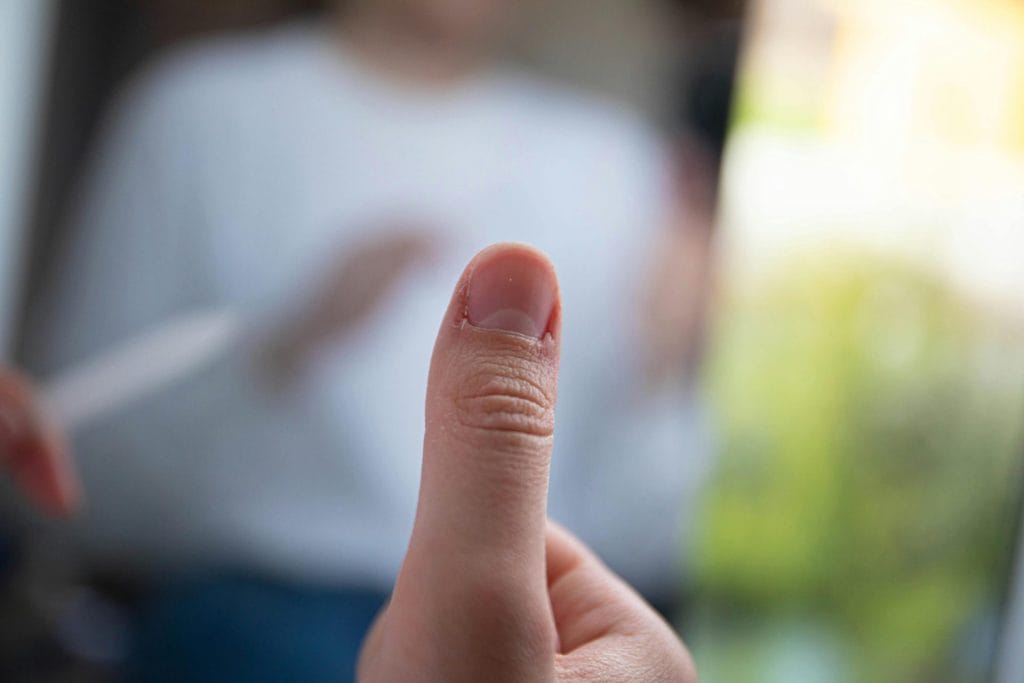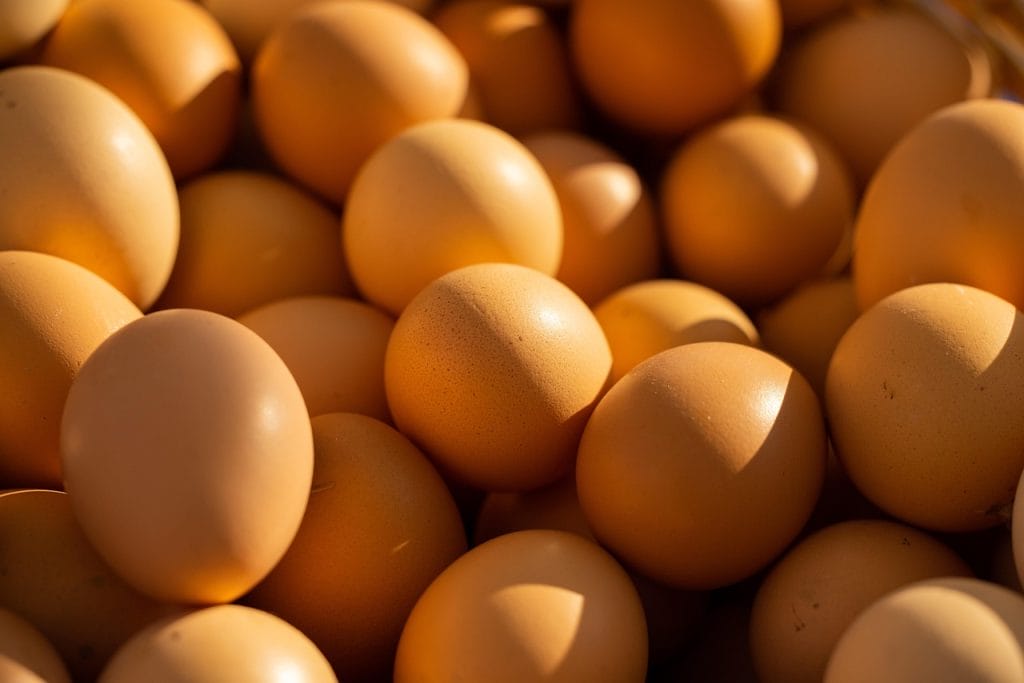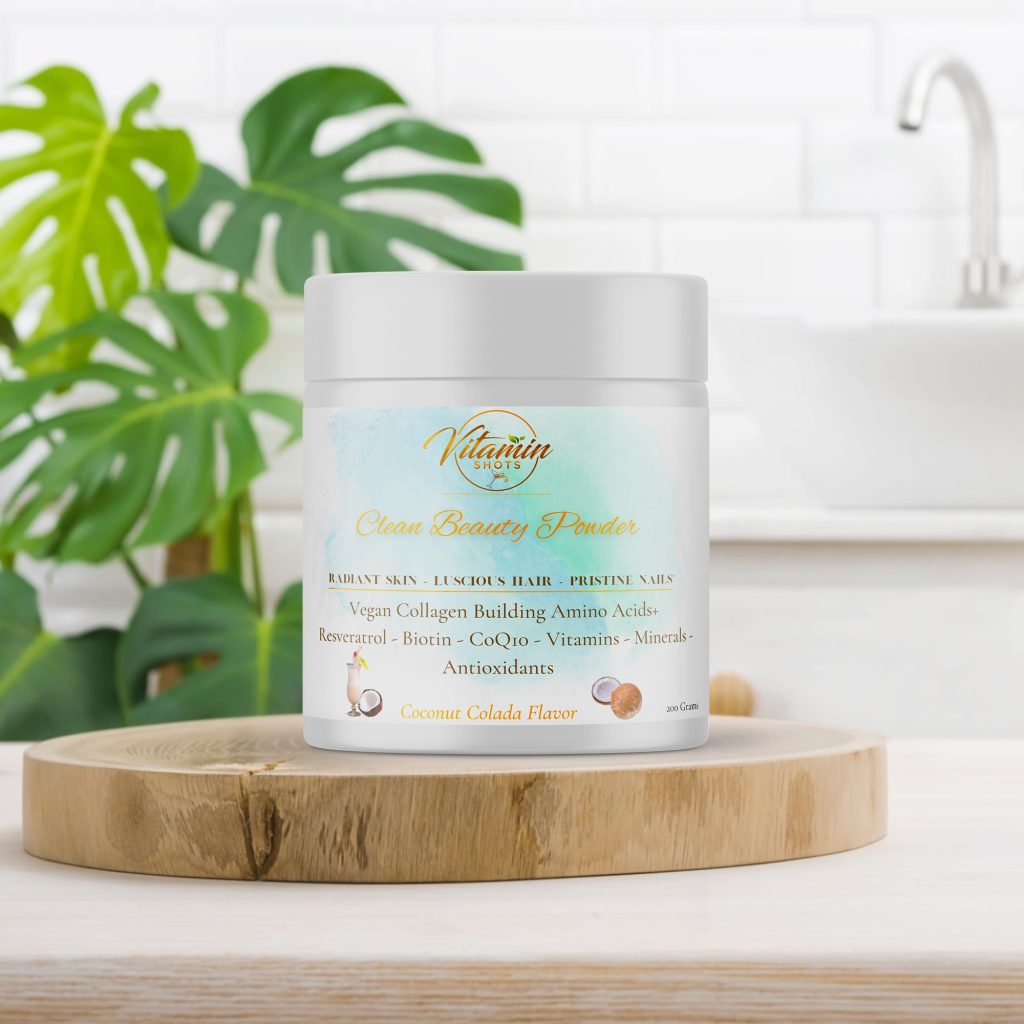Are you tired of constantly dealing with brittle, weak nails that chip, crack, and break at the worst possible moments? You’re not alone in this frustration. Brittle nails affect up to 20% of the population, with women being disproportionately affected, especially those over 60 where the prevalence jumps to 35% [1]. The constant cycle of nail damage, expensive salon repairs, and endless products that promise results but deliver disappointment can leave you feeling defeated.
But here’s the life-changing truth: your nails are a direct reflection of your nutritional status, and the solution to stronger, healthier nails isn’t found in a bottle of expensive nail treatment—it’s sitting right in your kitchen. Research shows that nearly any nutritional deficiency can affect nail growth and strength [2], which means the right foods can transform your nails from weak and brittle to strong and resilient.

This comprehensive guide reveals the exact foods, nutrients, and dietary strategies that will give you the healthy, beautiful nails you’ve always wanted. You’re about to discover how simple changes to your diet can eliminate nail problems at their source and create the foundation for nail strength that lasts. Your journey to nail confidence starts with your next meal.
The Hidden Problem: Why Your Nails Keep Breaking
The devastating impact of weak nails on your daily life
Every time your nails break, chip, or peel, it’s more than just a cosmetic inconvenience—it’s a signal that something fundamental is wrong with your nail health. Brittle nail syndrome, medically known as onychoschizia, affects fingernails almost exclusively and is characterized by increased fragility, splitting, peeling, and general nail brittleness [3].
The real cost of nail problems extends far beyond appearance:
- Difficulty performing everyday tasks like opening cans, typing, or handling small objects
- Increased risk of painful nail injuries and infections when nails split too deeply
- Constant anxiety about when your nails will break next
- Hundreds of dollars spent annually on nail treatments, strengtheners, and salon repairs
- Professional embarrassment during handshakes, presentations, or social interactions
The surprising truth about what causes nail weakness
You might think your nail problems are caused by external factors like frequent handwashing, harsh chemicals, or nail polish, but research reveals that nutritional deficiencies are the primary culprit behind most nail issues [4]. Your nails are essentially windows into your nutritional status, and deficiencies in specific vitamins and minerals manifest as visible nail problems.
The most common nutritional causes of nail weakness include:
- Protein deficiency – since nails are made primarily of keratin, a protein
- Biotin deficiency – even mild deficiencies can cause brittle, splitting nails
- Iron deficiency – leads to spoon-shaped nails, ridges, and general weakness

- Zinc deficiency – causes white spots, slow growth, and weakened nail structure
- Magnesium deficiency – results in vertical ridges and poor nail formation
Why conventional nail treatments fail you
Most nail strengthening products work only on the surface, creating a temporary illusion of strength while ignoring the underlying nutritional deficiencies that cause weakness in the first place. When you stop using these products, your nails return to their weak state because the root cause—inadequate nutrition—remains unaddressed.
The problem with the typical approach to nail care:
- Topical treatments can’t fix nutritional deficiencies
- Nail hardeners often contain formaldehyde that can make nails more brittle over time
- Expensive supplements may not contain the right forms or amounts of nutrients your nails need
- Generic vitamins don’t address the specific nutritional needs for nail health
The Consequences Get Worse: Why You Can’t Ignore Nail Health
The domino effect of nutritional deficiencies
When your nails are weak and brittle, it’s often just the beginning of a cascade of health issues. Your nails are among the first places to show signs of nutritional deficiencies because they’re made of rapidly dividing cells that require a constant supply of nutrients [5]. What shows up in your nails today often appears in your hair, skin, and energy levels tomorrow.
The progressive nature of nutrient deficiencies:
- Week 1-4: Nails become softer, more prone to chipping
- Month 2-3: Visible ridges, white spots, and thinning appear
- Month 4-6: Severe brittleness, constant breaking, and slow growth
- Beyond 6 months: Permanent nail damage, potential hair loss, and energy depletion
The hidden health warnings your nails are sending
Your brittle nails might be the early warning system for more serious health issues. Nail changes often precede other symptoms of deficiency diseases by months, giving you a crucial window to address problems before they become severe [6].
Nail symptoms that signal deeper health issues:
- Spoon-shaped nails (koilonychia) – strong indicator of iron deficiency anemia
- Vertical ridges – may signal magnesium deficiency affecting over 300 body processes
- White spots or lines – can indicate zinc deficiency affecting immune function
- Extremely slow growth – often reflects protein deficiency impacting muscle maintenance
- Constant peeling – frequently signals essential fatty acid deficiency affecting skin health
The social and professional costs you’re paying
In our image-conscious society, the condition of your nails makes an immediate impression that can impact both personal and professional relationships. Studies show that people make judgments about health, hygiene, and attention to detail based on nail appearance within seconds of meeting [7].
The real-world impact of nail problems:
- Professional setbacks – unkempt nails can hurt job prospects and client relationships
- Social anxiety – hiding your hands or feeling embarrassed during social interactions
- Dating disadvantages – nail condition affects first impressions in romantic situations
- Self-esteem issues – constant nail problems can impact overall confidence and self-image
Glam Dust
Radiant Skin – Luscious Hair – Pristine Nails
Vitamin Shots
The ultimate brain and body supplements
Vitamin Sprinkles
The ultimate brain and body supplements
Your Complete Solution: The Ultimate Guide to Nail-Nourishing Foods
The foundation: Understanding nail nutrition science
Your nails are composed primarily of keratin, the same protein found in your hair and skin. To build strong, healthy nails, your body requires specific nutrients in precise combinations that work synergistically to support nail growth, strength, and appearance [8].
The key principle of nail nutrition: Since it takes approximately 6 months to grow an entirely new nail, the nutrients you consume today will determine the strength and appearance of your nails six months from now. This means consistent nutritional support is essential for long-term nail health.
Protein: The building blocks of strong nails
Protein is absolutely critical for nail health because nails are made of keratin, a fibrous structural protein. Without adequate protein intake, your body cannot produce sufficient keratin, resulting in weak, thin nails that break easily [9].
The optimal protein strategy for nail health:
- Daily requirement: 0.8-1.2 grams per kilogram of body weight (higher end for nail repair)
- Quality matters: Complete proteins containing all essential amino acids are most effective
- Timing: Distribute protein intake throughout the day for maximum utilization
Top protein sources for nail strength:
Animal proteins (complete amino acid profiles):
- Lean meats – beef, pork, lamb provide high-quality protein plus iron and zinc
- Poultry – chicken and turkey offer protein with minimal saturated fat
- Fish and seafood – salmon, sardines, and shellfish add omega-3 fatty acids
- Eggs – contain all essential amino acids plus biotin and choline
- Dairy products – Greek yogurt, cottage cheese provide protein plus calcium
Plant proteins (combine for complete amino acid profiles):
- Legumes – lentils, chickpeas, black beans provide protein plus folate
- Quinoa – complete protein grain with all essential amino acids
- Nuts and seeds – almonds, walnuts, pumpkin seeds add healthy fats
- Soy products – tofu, tempeh, edamame offer complete plant proteins
Biotin: The nail strengthening superstar
Biotin (vitamin B7) is the most researched nutrient for nail health, with multiple studies showing significant improvements in nail strength and thickness. Research demonstrates that biotin supplementation can increase nail plate thickness by 25% in people with brittle nails [10].
How biotin transforms your nails:
- Enhances keratin production – the primary structural protein in nails
- Improves nail thickness – creating more resilient nail plates
- Reduces splitting and cracking – by strengthening intercellular bonds
- Accelerates growth – by supporting cellular metabolism in the nail matrix
The best biotin-rich foods for nail health:
- Egg yolks – contain 10 micrograms per egg, plus protein and choline
- Organ meats – liver provides 30+ micrograms per 3-ounce serving
- Nuts and seeds – almonds, sunflower seeds, and peanuts
- Sweet potatoes – provide biotin plus vitamin A for nail health
- Avocados – contain biotin plus healthy fats for nutrient absorption

- Salmon – offers biotin plus omega-3 fatty acids and protein
Optimal biotin intake: 30 micrograms daily for maintenance, 2.5-10 mg daily for therapeutic nail strengthening (consult healthcare provider for higher doses) [11].
Iron: Oxygen delivery for nail growth
Iron is essential for transporting oxygen to nail cells, and iron deficiency is one of the most common causes of nail problems worldwide. Women are particularly susceptible to iron deficiency due to menstruation, making adequate iron intake crucial for nail health [12].
Signs your nails need more iron:
- Spoon-shaped nails (koilonychia) – nails curve upward at the edges
- Vertical ridges – running from cuticle to nail tip
- Brittle, thin nails – that break easily with minimal pressure
- Pale nail beds – indicating poor oxygen circulation
- Slow nail growth – nails take longer than normal to grow
Iron-rich foods for stronger nails:
Heme iron sources (easily absorbed):
- Red meat – beef, lamb provide highly bioavailable iron
- Organ meats – liver contains the highest iron concentration
- Poultry – chicken, turkey offer moderate iron with protein
- Seafood – oysters, clams, sardines provide iron plus zinc
Non-heme iron sources (pair with vitamin C for better absorption):
- Dark leafy greens – spinach, kale, Swiss chard

- Legumes – lentils, chickpeas, kidney beans
- Fortified cereals – choose brands with added iron
- Pumpkin seeds – provide iron plus zinc and magnesium
Iron absorption enhancers:
- Vitamin C – citrus fruits, bell peppers, strawberries
- Meat proteins – enhance iron absorption from plant sources
- Cast iron cooking – can increase iron content of foods
Zinc: The growth and repair mineral
Zinc plays a crucial role in protein synthesis and cell division, both essential processes for healthy nail growth. Zinc deficiency can cause white spots on nails, slow growth, and weakened nail structure [13].
How zinc supports nail health:
- Protein synthesis – essential for keratin production
- Cell division – required for nail growth and repair
- Wound healing – helps repair damaged nail tissues
- Immune function – protects against nail infections
Top zinc sources for nail strength:
- Oysters – provide 74mg per serving (highest food source)
- Red meat – beef, lamb offer highly bioavailable zinc
- Pumpkin seeds – 2.2mg per ounce, perfect for snacking
- Chickpeas – 1.3mg per half cup, plus fiber and protein
- Cashews – 1.6mg per ounce, plus healthy fats
Daily zinc needs: 8mg for women, 11mg for men (pregnant and lactating women need more) [14].
Omega-3 fatty acids: Natural nail moisturizers
Omega-3 fatty acids help maintain nail flexibility and prevent brittleness by keeping nail plates properly hydrated from within. These essential fats also reduce inflammation that can interfere with healthy nail growth [15].
Benefits of omega-3s for nails:
- Improved flexibility – nails bend instead of breaking
- Enhanced shine – natural lubrication creates glossy appearance
- Reduced inflammation – supports healthy nail growth
- Better cuticle health – less dry, cracked skin around nails
Best omega-3 sources for nail health:
- Fatty fish – salmon, mackerel, sardines, anchovies
- Walnuts – convenient plant-based omega-3 source
- Flaxseeds – grind fresh for better absorption
- Chia seeds – add to smoothies or yogurt
- Hemp seeds – provide omega-3s plus protein
Vitamin C: Collagen production support
Vitamin C is essential for collagen synthesis, which provides structural support for nails. Adequate vitamin C intake helps maintain nail strength and accelerates healing of damaged nail tissues [16].
How vitamin C strengthens nails:
- Collagen production – provides structural framework for nails
- Iron absorption – enhances uptake of iron from plant sources
- Antioxidant protection – protects nails from free radical damage
- Wound healing – accelerates repair of nail injuries
Vitamin C-rich foods for nail health:
- Citrus fruits – oranges, lemons, grapefruits
- Bell peppers – red peppers contain more vitamin C than oranges
- Strawberries – provide vitamin C plus antioxidants

- Kiwi fruit – extremely high vitamin C concentration
- Broccoli – offers vitamin C plus other nail-supporting nutrients
Glam Dust
Radiant Skin – Luscious Hair – Pristine Nails
Vitamin Shots
The ultimate brain and body supplements
Vitamin Sprinkles
The ultimate brain and body supplements
Implementation Guide: Your 30-Day Nail Transformation Plan – Diet tips for stronger nails
Week 1: Foundation building
Start with the basics by incorporating nail-supporting foods into every meal. Focus on establishing consistent protein intake and adding biotin-rich foods.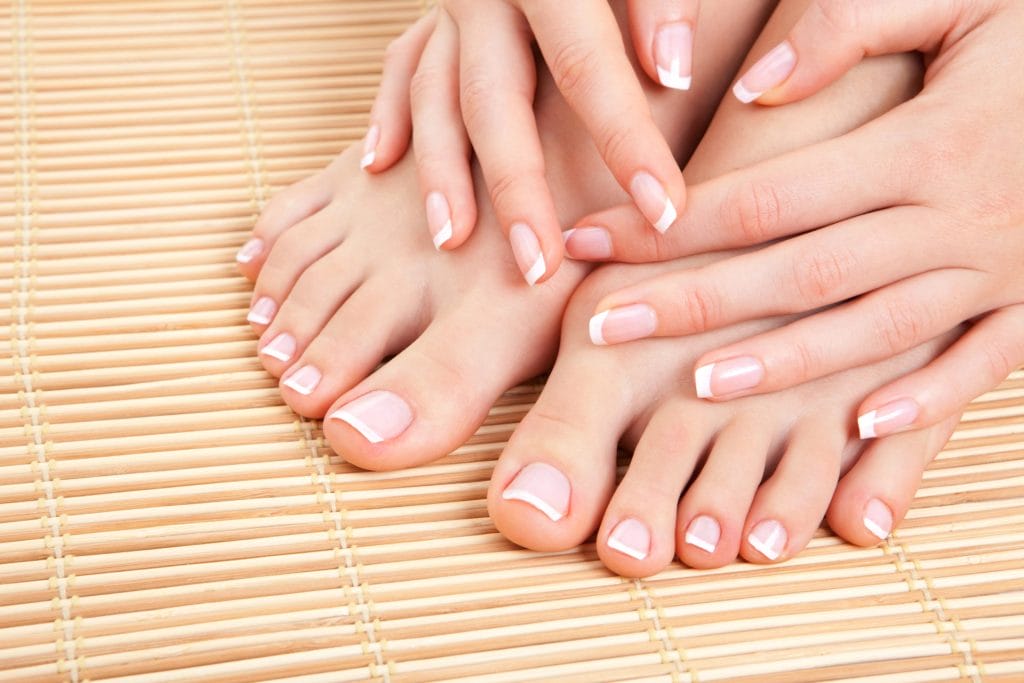
Daily meal structure:
Breakfast (aim for 20-25g protein):
- 2 whole eggs + 1 egg white scrambled with spinach (biotin, protein, iron)
- 1 slice whole grain toast with 1/4 avocado (biotin, healthy fats)
- 1 cup fresh berries (vitamin C for iron absorption)
Lunch (aim for 25-30g protein):
- 4oz grilled chicken or salmon (protein, biotin if salmon)
- Large mixed salad with dark leafy greens (iron, folate)
- 2 tbsp pumpkin seeds (zinc, iron, healthy fats)
- Bell pepper strips (vitamin C)
Dinner (aim for 25-30g protein):
- 4oz lentils (protein, iron, zinc)
- Steamed broccoli (vitamin C, folate)
- Sweet potato (biotin, vitamin A)
Snacks:
- Handful of almonds (biotin, protein, healthy fats)
- Greek yogurt with berries (protein, vitamin C)
Week 2: Optimization and fine-tuning
Increase the variety and concentration of nail-supporting nutrients. Add specific combinations that enhance absorption.
Enhanced strategies:
- Combine iron-rich foods with vitamin C at every meal containing iron
- Add a tablespoon of ground flaxseed to breakfast for omega-3s
- Include zinc-rich foods at lunch and dinner
- Ensure protein at every meal and snack
Sample day with optimized combinations:
Breakfast: Spinach and mushroom omelet (3 eggs) with orange slices Mid-morning: Greek yogurt with chopped walnuts and berries Lunch: Quinoa salad with chickpeas, bell peppers, and lemon dressing Afternoon: Apple slices with almond butter Dinner: Grilled salmon with steamed kale and roasted sweet potato Evening: Small handful of pumpkin seeds
Week 3: Advanced nutrition strategies
Introduce targeted timing and specific food combinations that maximize nutrient absorption and utilization.
Advanced techniques:
- Eat protein within 30 minutes of waking to jumpstart keratin production
- Include vitamin C with every iron-containing meal for optimal absorption
- Add healthy fats to vitamin A-rich foods for better uptake
- Space zinc and calcium intake by 2+ hours to prevent absorption interference
Meal timing for optimal nail nutrition:
- 7:00 AM: High-protein breakfast with biotin-rich foods
- 10:00 AM: Vitamin C-rich snack (enhance iron absorption from breakfast)
- 1:00 PM: Iron and zinc-rich lunch with vitamin C vegetables
- 4:00 PM: Omega-3 rich snack (walnuts or chia pudding)
- 7:00 PM: Protein-rich dinner with magnesium sources
- 9:00 PM: Small protein snack if needed (Greek yogurt or nuts)
Week 4: Monitoring and adjustment
Assess your progress and fine-tune your approach based on how your nails are responding to improved nutrition.
Progress indicators to watch for:
- Nail growth rate – healthy nails grow 2-3mm per month
- Base strength – new growth should feel stronger than older nail
- Cuticle health – less dryness and better healing
- Overall appearance – shinier, smoother nail surface
Adjustments based on results:
- If growth is slow: Increase protein and biotin intake
- If nails are still brittle: Add more omega-3s and magnesium
- If ridges persist: Focus on iron and B-vitamin rich foods
- If white spots appear: Increase zinc-rich foods
Common Mistakes That Sabotage Your Progress
Mistake 1: Inconsistent protein intake
Many people eat adequate protein overall but distribute it poorly throughout the day. Your body can only utilize a limited amount of protein at one time, so massive protein meals followed by protein-free periods don’t support optimal nail health [17].
The solution: Aim for 20-30 grams of protein at each meal and 10-15 grams at snacks. This ensures your nail matrix has a constant supply of amino acids for keratin production.
Mistake 2: Ignoring nutrient absorption factors
Simply eating nutrient-rich foods isn’t enough if your body can’t absorb them effectively. Many people unknowingly consume foods or drinks that block nutrient absorption [18].
Common absorption blockers:
- Coffee or tea with iron-rich meals – tannins reduce iron absorption by up to 60%
- Calcium supplements with iron – these minerals compete for absorption
- High-fiber foods with zinc – phytates can bind zinc and prevent uptake
- Alcohol with B vitamins – impairs absorption and increases excretion
The solution: Time your nutrients strategically and avoid known absorption inhibitors within 2 hours of eating nutrient-dense meals.
Mistake 3: Expecting immediate results
Nail improvements take time because you’re literally growing new nails from the inside out. It takes 4-6 months to completely replace a fingernail, so visible improvements in strength and appearance develop gradually [19].
Realistic timeline expectations:
- Week 1-2: Improved cuticle health and nail flexibility
- Week 3-4: Reduced chipping and breaking of new growth
- Month 2-3: Visible improvements in nail strength and thickness
- Month 4-6: Dramatic transformation in overall nail health and appearance
Mistake 4: Focusing on single nutrients
Nail health requires a symphony of nutrients working together. Taking high-dose biotin supplements while ignoring protein, iron, or other essential nutrients creates nutritional imbalances that can actually worsen nail health [20].
The solution: Focus on a comprehensive approach that addresses all aspects of nail nutrition through varied, nutrient-dense whole foods rather than relying on single-nutrient supplements.
Special Circumstances: Customizing Your Approach
Nail health during pregnancy and breastfeeding
Pregnancy and breastfeeding dramatically increase nutritional needs, and many women experience nail changes during these periods. Hormonal fluctuations can affect nail growth and strength, making proper nutrition even more critical [21].
Enhanced nutritional needs:
- Protein: Increase to 1.1-1.3g per kg body weight
- Iron: 27mg daily during pregnancy, 9mg while breastfeeding
- Folate: 600mcg daily during pregnancy, 500mcg while breastfeeding
- Biotin: 35mcg daily (increased from 30mcg for non-pregnant women)
Safe nail nutrition strategies during pregnancy:
- Focus on whole foods rather than high-dose supplements
- Avoid liver and organ meats due to high vitamin A content
- Increase iron-rich plant foods paired with vitamin C
- Add extra protein through safe sources like pasteurized dairy, eggs, and lean meats
Nail health for vegans and vegetarians
Plant-based diets can absolutely support excellent nail health, but require careful attention to specific nutrients that are less abundant or less well-absorbed from plant sources [22].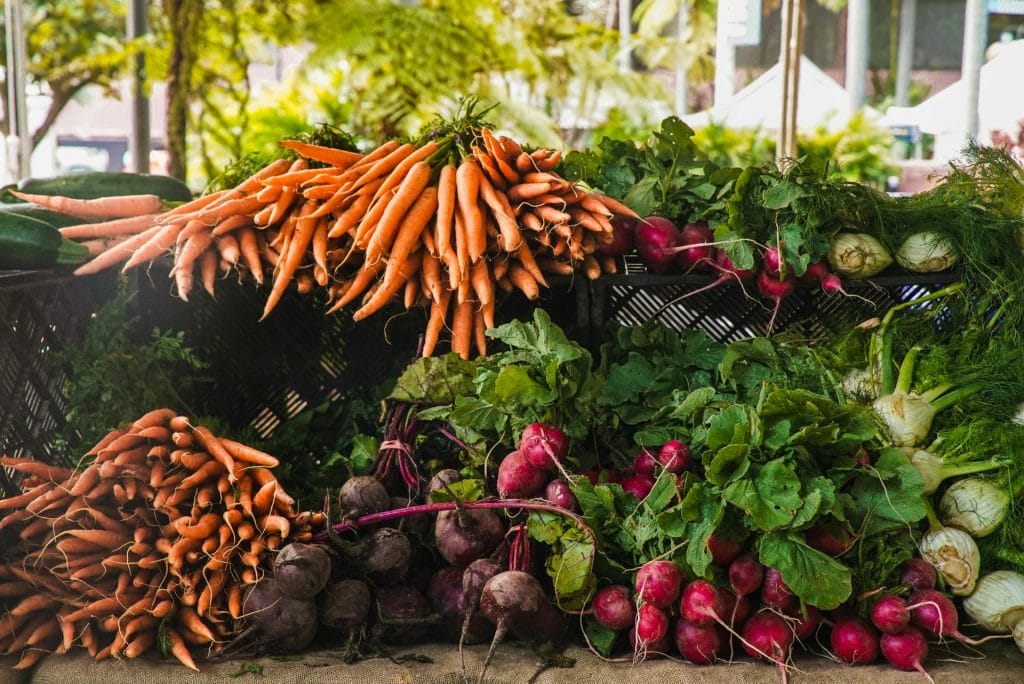
Key nutrients requiring special attention:
- B12: Essential supplement (2.4mcg daily minimum)
- Iron: Combine with vitamin C, avoid coffee/tea with meals
- Zinc: Include seeds, nuts, and legumes daily
- Omega-3s: Use algae-based supplements or flaxseed/chia seeds
- Protein: Combine complementary proteins for complete amino acid profiles
Optimal plant-based nail nutrition:
- Breakfast: Fortified plant milk smoothie with ground flaxseed, berries, and protein powder
- Lunch: Quinoa salad with chickpeas, pumpkin seeds, and lemon dressing
- Dinner: Tofu stir-fry with dark leafy greens and sesame seeds
- Snacks: Nut butters, tahini, or fortified nutritional yeast
Age-related nail changes and nutrition
As we age, nail growth naturally slows and nails become more brittle. Starting at age 25, nail growth rate decreases by 0.5% each year, and postmenopausal women are particularly susceptible to nail brittleness [23].
Age-specific nutritional strategies:
Ages 25-40:
- Focus on prevention with consistent nutrient intake
- Maintain adequate protein for ongoing nail strength
- Include antioxidants to protect against environmental damage
Ages 40-60:
- Increase protein to counteract age-related muscle loss
- Add extra biotin (5-10mg daily) for enhanced nail strength
- Include omega-3s for flexibility and moisture
60+ years:
- Consider digestive support for better nutrient absorption
- Increase nutrient density in smaller meal portions
- Add magnesium for improved protein synthesis
- Include vitamin D for overall bone and nail health
Glam Dust
Radiant Skin – Luscious Hair – Pristine Nails
Vitamin Shots
The ultimate brain and body supplements
Vitamin Sprinkles
The ultimate brain and body supplements
Cost Analysis: Investing in Nail Health Through Nutrition
The real cost of nail problems
Before discovering the power of nutrition, most people spend hundreds or thousands of dollars annually trying to fix nail problems with external treatments that only provide temporary solutions.
Annual costs of conventional nail treatments:
- Professional manicures: $600-1,200 yearly (bi-weekly appointments)
- Nail strengthening products: $150-300 yearly
- Supplements: $200-400 yearly (often ineffective single-nutrient formulas)
- Nail repairs and emergency fixes: $100-300 yearly
- Total annual cost: $1,050-2,200
The nutrition investment
Improving nail health through optimal nutrition requires a modest increase in food budget that provides benefits far beyond nail health.
Additional monthly food costs for nail-optimized nutrition:
- High-quality proteins: $30-50 extra monthly
- Organic nuts and seeds: $15-25 monthly
- Additional fruits and vegetables: $20-40 monthly
- Omega-3 rich fish: $25-40 monthly
- Total monthly increase: $90-155
Annual nutrition investment: $1,080-1,860
The superior value proposition
Investing in nail nutrition provides compound benefits that extend far beyond nail health:
Additional health benefits:
- Improved hair quality – same nutrients support hair strength and growth
- Better skin health – enhanced collagen production and hydration
- Increased energy levels – optimal nutrition improves overall vitality
- Enhanced immune function – better nutrient status supports immunity
- Improved mood and cognition – proper nutrition affects brain function
Long-term financial benefits:
- Reduced need for nail treatments saves $500-1,000 annually
- Lower supplement costs when nutrients come from food
- Decreased healthcare costs from improved overall nutrition
- Permanent results versus temporary fixes requiring ongoing expense
How to Keep Your Nails Strong and Healthy Naturally
To keep your nails strong and healthy, it’s important to follow a balanced diet and eat the best foods for healthy nails. Your fingernail and nail plate need proper nutrients like vitamin e, vitamin b12, and a biotin supplement to support nail strength, healthy growth, and help make your nails grow faster. Healthy fats, b vitamin, and vitamins and minerals are needed for healthy cell function and to keep your nails looking strong. Foods like salmon, eggs, and leafy greens can help your nails grow faster and grow strong. To protect your nails and maintain skin and nail health, avoid harsh nail polish removers and choose gentle nail care products. Using home remedies, staying hydrated, and avoiding peeling nails can lead to stronger nails and help improve nail condition.

Tips for healthy nails include avoiding damage, using natural nail treatments, and avoiding habits that lead to nail weakness. Support hair and nail health and skin and nails with a diet rich in nutrients and protein in your diet to help your nails grow, grow healthy, and stay healthy and strong. Nails are made of keratin, and nails need care like moisturizing to avoid damaged nails and vertical ridges in your nails. Keeping nails strong and healthy also means avoiding overuse of nail polish, using good nail hygiene, and choosing nail experts when needed. Natural supplements and a nutritious diet are essential for good nail health, beautiful nails, and shiny nails that grow nails naturally and help help your nails look their best.
Quality and Selection: Choosing the Best Nail-Supporting Foods
Selecting high-quality proteins
The quality of protein directly impacts nail health, so choosing the best sources ensures optimal amino acid availability for keratin production [24].
Protein quality indicators:
- Complete amino acid profile – contains all essential amino acids
- High biological value – easily absorbed and utilized by the body
- Minimal processing – retains natural nutrient cofactors
- Sustainable sourcing – supports long-term availability
Top-tier protein sources for nail health:
- Grass-fed meats – higher omega-3 content and better nutrient profile
- Wild-caught fish – superior omega-3 levels and fewer contaminants
- Pastured eggs – enhanced vitamin D and omega-3 content
- Organic dairy – reduced exposure to hormones and antibiotics
Maximizing nutrient density
Focus on foods that provide multiple nail-supporting nutrients rather than single-nutrient sources. This approach ensures synergistic effects that enhance overall nail health [25].
Multi-nutrient powerhouses:
- Salmon – protein + biotin + omega-3s + vitamin D
- Eggs – protein + biotin + iron + zinc + choline
- Pumpkin seeds – zinc + iron + omega-3s + magnesium
- Dark leafy greens – iron + folate + vitamin C + magnesium
- Sweet potatoes – biotin + vitamin A + fiber + potassium
Organic vs. conventional considerations
While organic foods aren’t always necessary for nail health, certain foods are worth buying organic to minimize exposure to chemicals that can interfere with nutrient absorption [26].
Priority organic purchases:
- Dirty Dozen fruits and vegetables – highest pesticide residues
- Animal proteins – reduced antibiotic and hormone exposure

- Nuts and seeds – avoid preservatives and chemical treatments
Budget-friendly strategies:
- Buy conventional for thick-skinned produce (bananas, avocados, melons)
- Choose frozen organic vegetables when fresh is too expensive
- Buy in season and preserve for year-round availability
Conclusion: A Nourished Body Builds Beautiful Nails
The journey to strong, beautiful nails doesn’t start in the salon—it begins in your kitchen. As you’ve seen throughout this comprehensive guide, brittle and fragile nails are often a reflection of deeper nutritional imbalances, not just external wear and tear. By understanding and prioritizing the right combination of protein, biotin, iron, zinc, omega-3s, and vitamins, you can address the root causes of weak nails and spark a transformation that radiates from the inside out. With consistent, intentional dietary choices, your nails can become not only stronger and healthier but also a visual reflection of your body’s overall wellness. Remember: the plate you fill today is shaping the nails you’ll see in six months. Choose wisely, nourish consistently, and let your hands tell the story of health, vitality, and balance.
Frequently Asked Questions
How long does it take to see improvements in nail health through diet changes?
The timeline for nail improvements varies, but most people notice changes within 2-4 weeks. Initial improvements include better cuticle health and increased nail flexibility, while significant strength improvements typically appear within 2-3 months. Complete nail transformation takes 4-6 months because that’s how long it takes to grow an entirely new nail. Consistency is key – sporadic dietary improvements won’t produce lasting results.
Can I improve my nail health with supplements instead of changing my diet?
While supplements can help address specific deficiencies, whole foods provide superior nutrition for nail health. Food sources contain nutrients in their natural forms with beneficial cofactors that enhance absorption and utilization. Most people get better results from a nutrient-dense diet than from supplements alone. However, certain supplements like biotin or iron may be beneficial when recommended by healthcare providers for specific deficiencies.
Which foods should I avoid for better nail health?
Certain foods can interfere with nutrient absorption or promote inflammation that affects nail health. Limit processed foods high in sugar and unhealthy fats, as these can promote inflammation. Avoid excessive alcohol, which interferes with B-vitamin absorption. Don’t drink coffee or tea with iron-rich meals, as tannins reduce iron absorption by up to 60%. Minimize refined carbohydrates, which can deplete B-vitamins needed for nail health.
Are there specific foods that can help with ridged or splitting nails?
Yes, different nail problems often respond to specific nutrients. Vertical ridges often indicate magnesium deficiency – increase dark leafy greens, nuts, and whole grains. Horizontal ridges (Beau’s lines) may suggest protein deficiency – focus on high-quality protein sources. Splitting nails typically need biotin and protein – emphasize eggs, salmon, nuts, and seeds. Spoon-shaped nails usually indicate iron deficiency – combine iron-rich foods with vitamin C sources.
How much protein do I need daily for healthy nail growth?
For optimal nail health, aim for 0.8-1.2 grams of protein per kilogram of body weight daily. A 140-pound woman needs approximately 50-75 grams of protein daily, distributed throughout the day. Include 20-30 grams at each meal and 10-15 grams at snacks for consistent amino acid availability. Choose complete proteins that contain all essential amino acids, or combine plant proteins to achieve complete amino acid profiles.
Can certain medical conditions affect how diet impacts nail health?
Yes, several medical conditions can affect nutrient absorption and nail health. Thyroid disorders can cause brittle nails despite adequate nutrition. Digestive issues like celiac disease or IBD may impair nutrient absorption. Diabetes can affect circulation to nail beds. Autoimmune conditions may increase nutritional needs. If you have underlying health conditions, work with your healthcare provider to optimize your nutritional approach for nail health.
Is it possible to have too much of certain nail-supporting nutrients?
Yes, excessive intake of certain nutrients can be harmful. Fat-soluble vitamins (A, D, E, K) can accumulate and cause toxicity at very high doses. Too much iron can be dangerous, especially for men and postmenopausal women. Excessive zinc can interfere with copper absorption. Very high biotin doses may interfere with certain lab tests. Stick to recommended dietary amounts and consult healthcare providers before taking high-dose supplements.
What’s the best way to combine foods for optimal nail nutrition?
Strategic food combining enhances nutrient absorption and nail health benefits. Always pair iron-rich foods with vitamin C sources to maximize iron uptake. Combine healthy fats with vitamin A-rich foods for better absorption. Include protein with every meal to maintain steady amino acid levels. Avoid calcium supplements or high-calcium foods within 2 hours of iron-rich meals. Eat omega-3 rich foods regularly to maintain nail flexibility and shine.
How does hydration affect nail health?
Proper hydration is crucial for nail health, as dehydrated nails become brittle and prone to breaking. Aim for 8-10 glasses of water daily, more if you’re active or in dry climates. Water helps transport nutrients to nail cells and maintains nail flexibility. Signs of nail dehydration include increased brittleness, dullness, and tendency to crack. Include water-rich foods like cucumbers, watermelon, and leafy greens to boost hydration from within.
Can age-related nail changes be reversed through nutrition?
While you can’t completely reverse age-related changes, optimal nutrition can significantly improve nail health at any age. Age-related nail brittleness often responds well to increased biotin, protein, and omega-3 intake. Postmenopausal women may see particular benefits from enhanced nutrition approaches. The key is consistency – older adults may need longer to see improvements but can achieve significant nail health gains through proper nutrition.
References
[1] – Brittle nails affect up to 20% of the population, with women being disproportionately affected, especially those over 60 where the prevalence jumps to 35%
[2] – Research shows that nearly any nutritional deficiency can affect nail growth and strength
[3] – Brittle nail syndrome, medically known as onychoschizia, affects fingernails almost exclusively and is characterized by increased fragility, splitting, peeling, and general nail brittleness
[4] – Research reveals that nutritional deficiencies are the primary culprit behind most nail issues
[5] – Your nails are among the first places to show signs of nutritional deficiencies because they’re made of rapidly dividing cells that require a constant supply of nutrients
[6] – Nail changes often precede other symptoms of deficiency diseases by months, giving you a crucial window to address problems before they become severe
[7] – Studies show that people make judgments about health, hygiene, and attention to detail based on nail appearance within seconds of meeting
[8] – To build strong, healthy nails, your body requires specific nutrients in precise combinations that work synergistically to support nail growth, strength, and appearance
[9] – Without adequate protein intake, your body cannot produce sufficient keratin, resulting in weak, thin nails that break easily
[10] – Research demonstrates that biotin supplementation can increase nail plate thickness by 25% in people with brittle nails
[11] – Optimal biotin intake: 30 micrograms daily for maintenance, 2.5-10 mg daily for therapeutic nail strengthening (consult healthcare provider for higher doses)
[12] – Iron deficiency is one of the most common causes of nail problems worldwide. Women are particularly susceptible to iron deficiency due to menstruation, making adequate iron intake crucial for nail health
[13] – Zinc deficiency can cause white spots on nails, slow growth, and weakened nail structure
[14] – Daily zinc needs: 8mg for women, 11mg for men (pregnant and lactating women need more)
[15] – Omega-3 fatty acids help maintain nail flexibility and prevent brittleness by keeping nail plates properly hydrated from within. These essential fats also reduce inflammation that can interfere with healthy nail growth
[16] – Adequate vitamin C intake helps maintain nail strength and accelerates healing of damaged nail tissues
[17] – Your body can only utilize a limited amount of protein at one time, so massive protein meals followed by protein-free periods don’t support optimal nail health
[18] – Many people unknowingly consume foods or drinks that block nutrient absorption
[19] – It takes 4-6 months to completely replace a fingernail, so visible improvements in strength and appearance develop gradually
[20] – Taking high-dose biotin supplements while ignoring protein, iron, or other essential nutrients creates nutritional imbalances that can actually worsen nail health
[21] – Hormonal fluctuations can affect nail growth and strength, making proper nutrition even more critical
[22] – Plant-based diets can absolutely support excellent nail health, but require careful attention to specific nutrients that are less abundant or less well-absorbed from plant sources
[23] – Starting at age 25, nail growth rate decreases by 0.5% each year, and postmenopausal women are particularly susceptible to nail brittleness
[24] – The quality of protein directly impacts nail health, so choosing the best sources ensures optimal amino acid availability for keratin production
[25] – Focus on foods that provide multiple nail-supporting nutrients rather than single-nutrient sources. This approach ensures synergistic effects that enhance overall nail health
[26] – Certain foods are worth buying organic to minimize exposure to chemicals that can interfere with nutrient absorption


